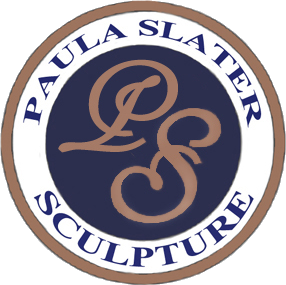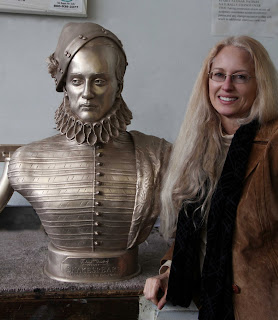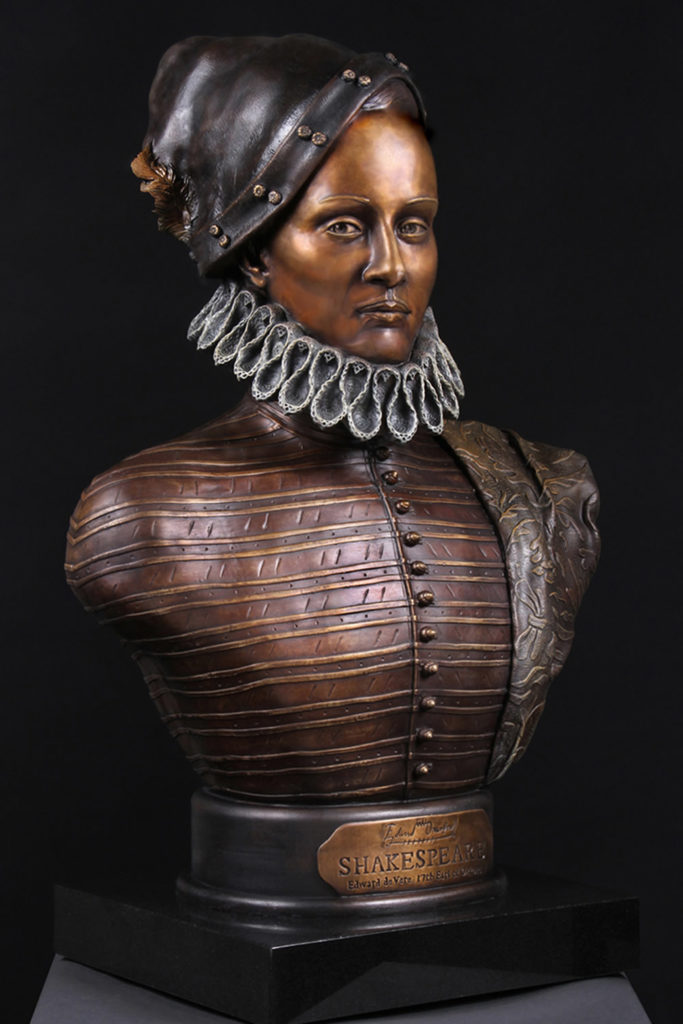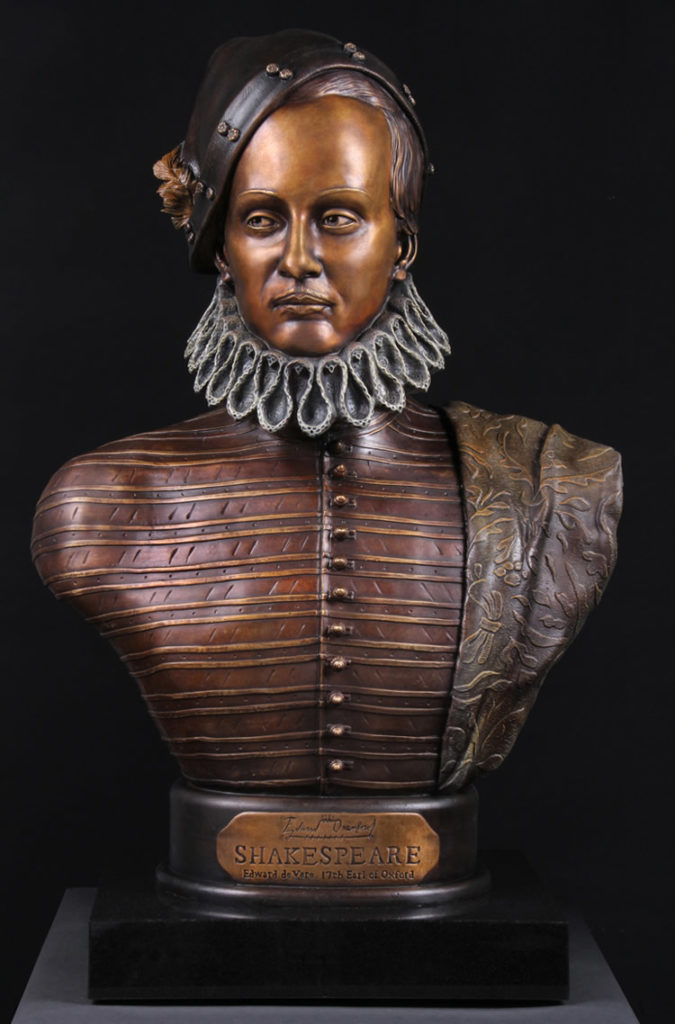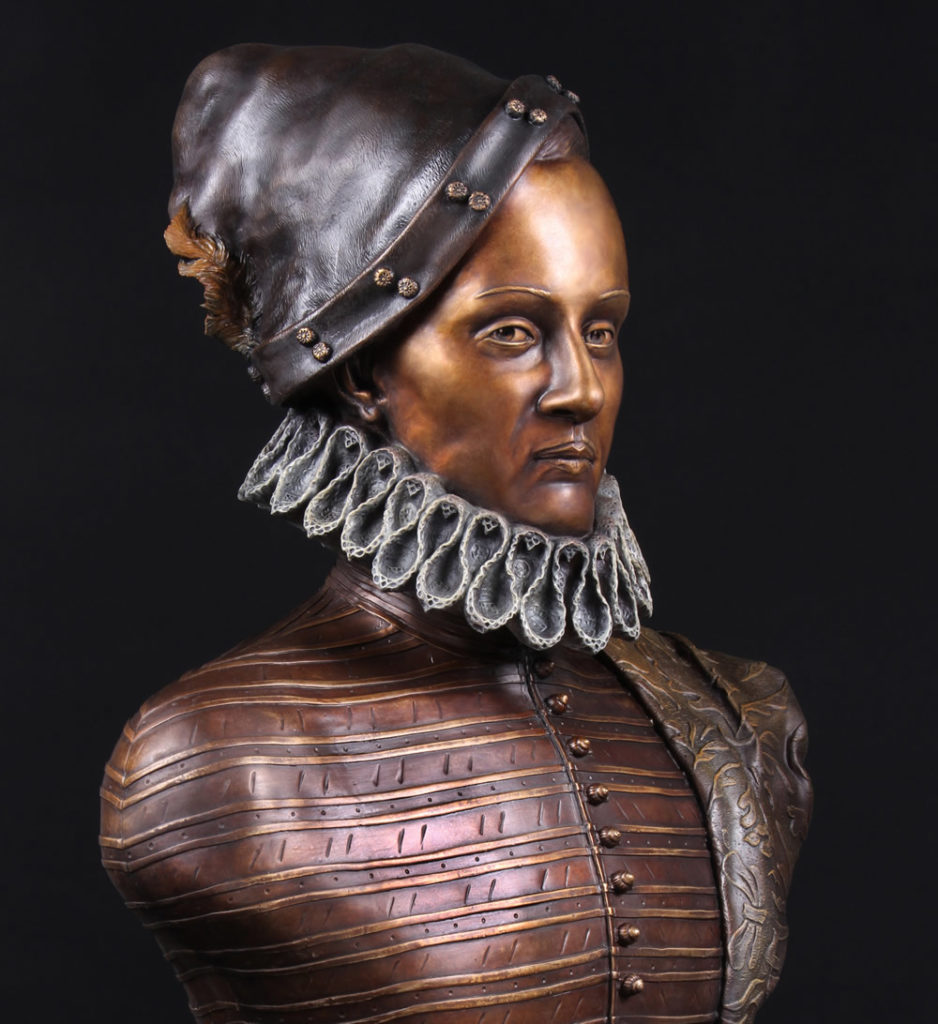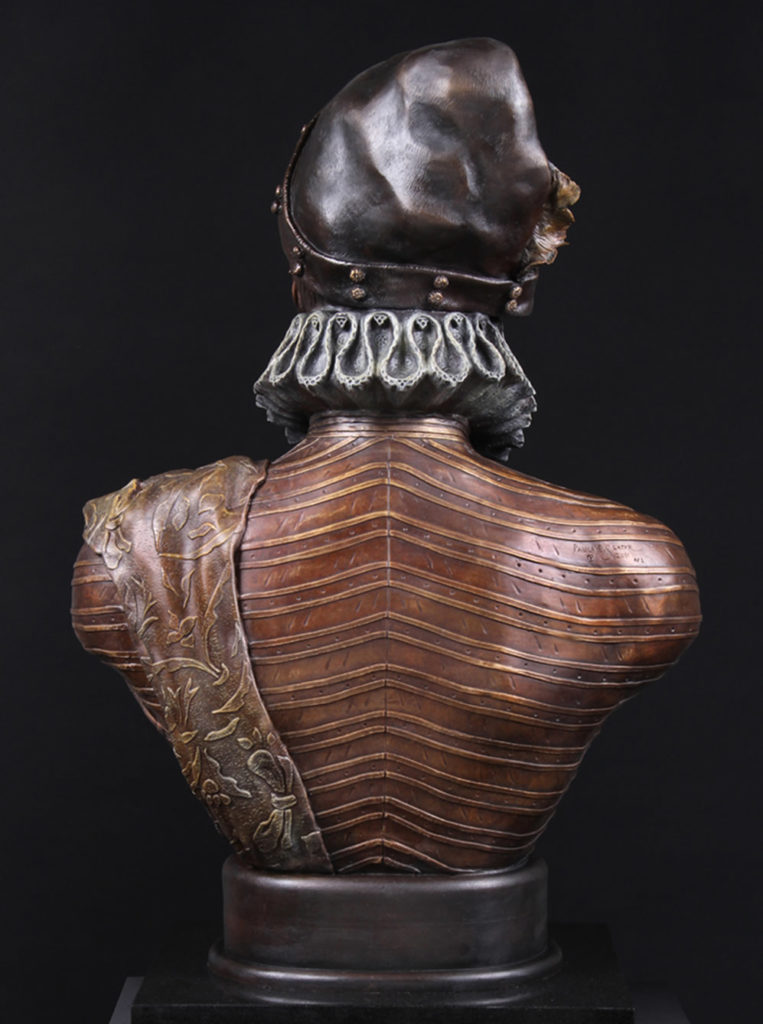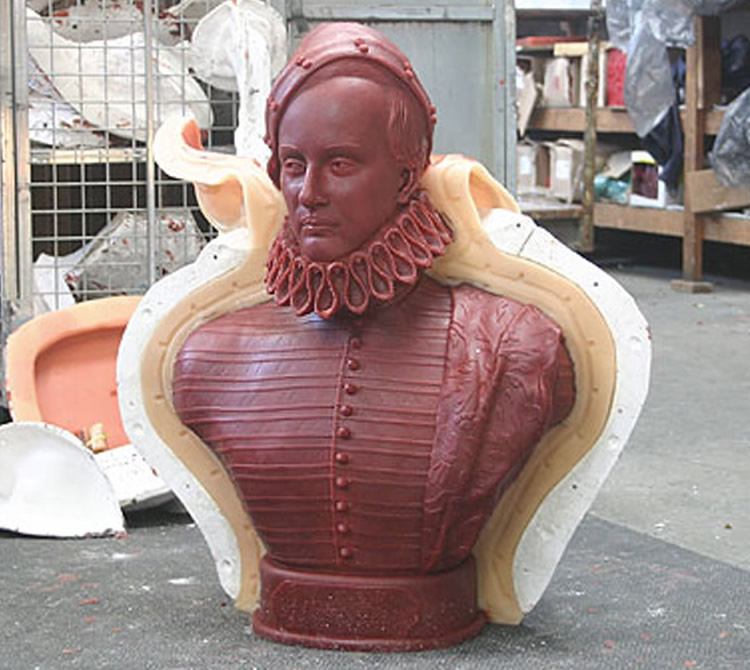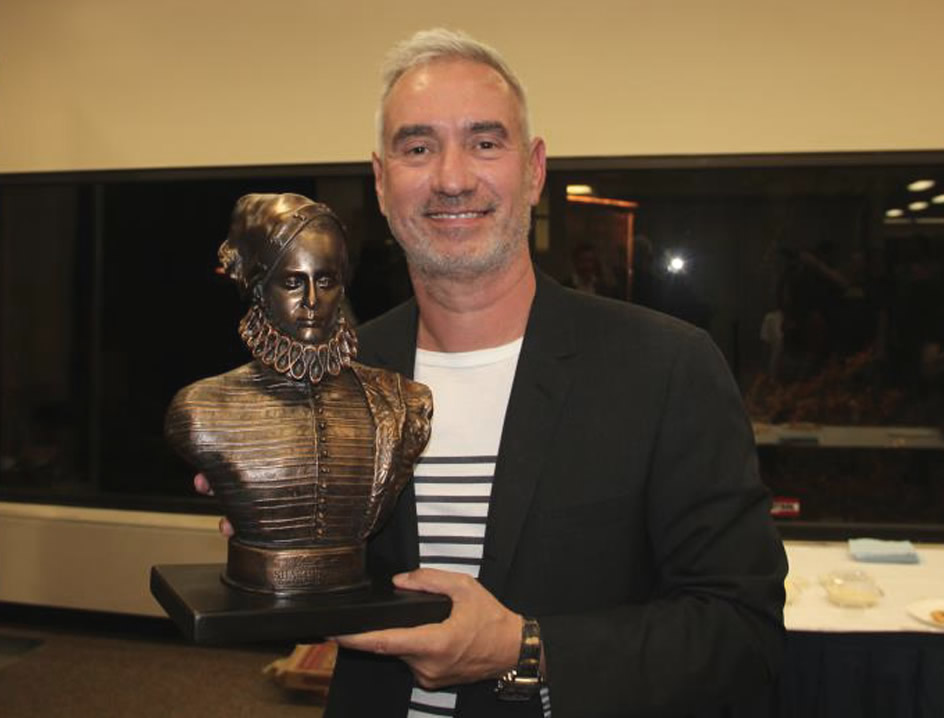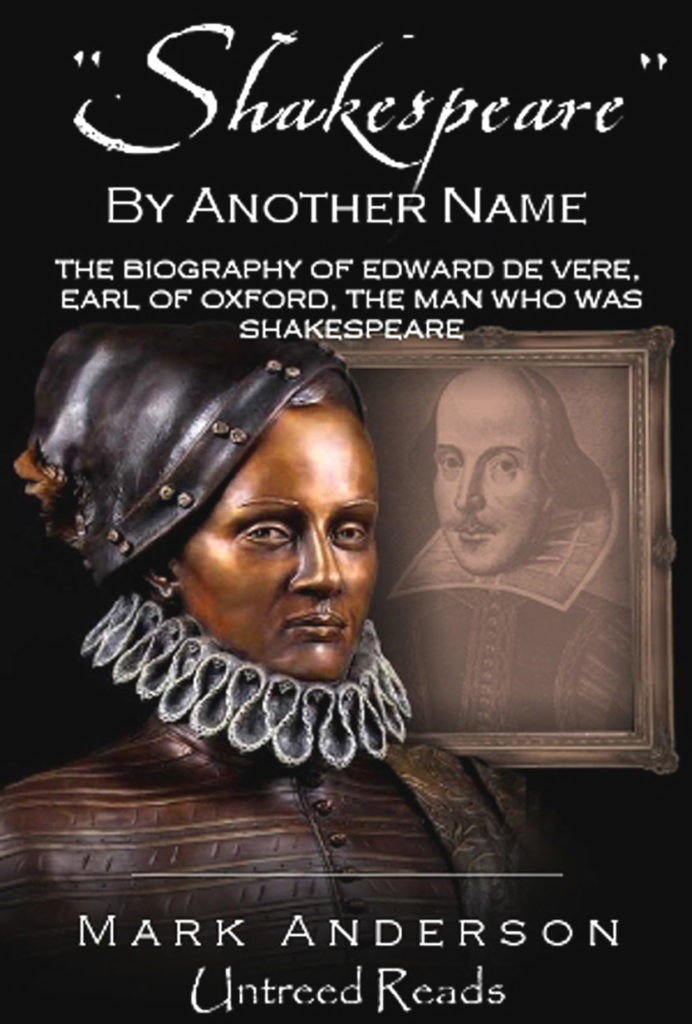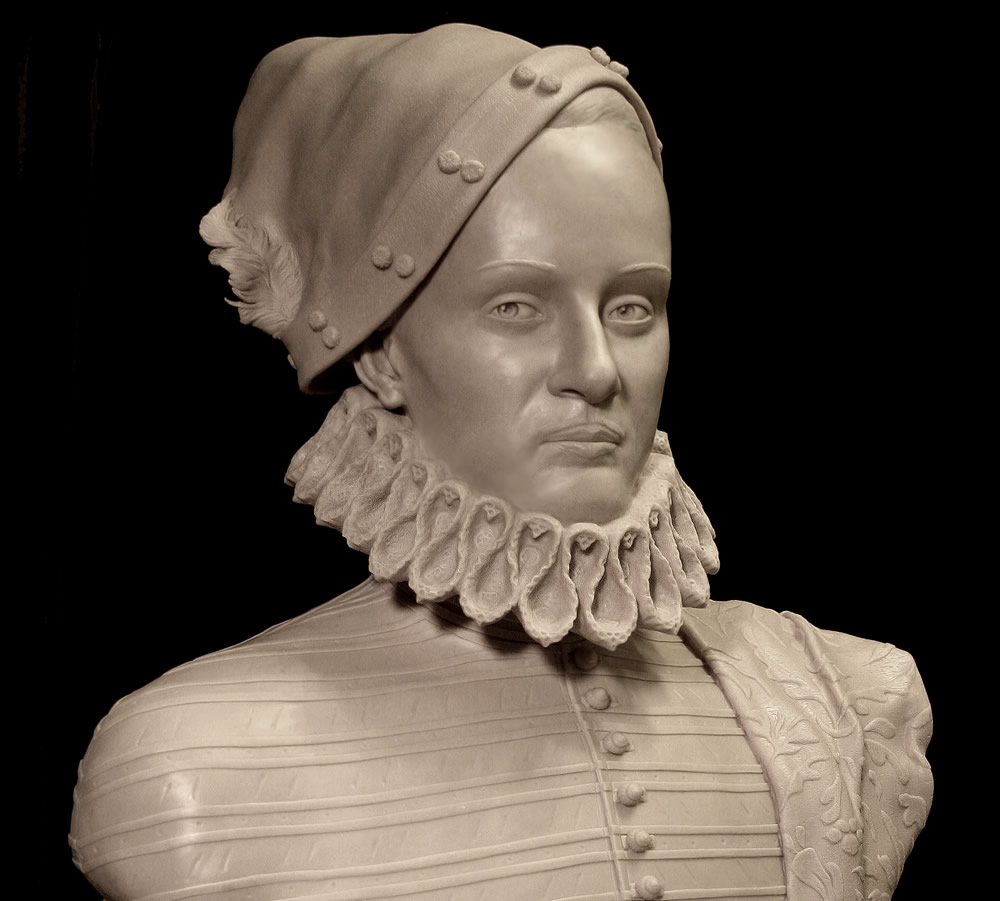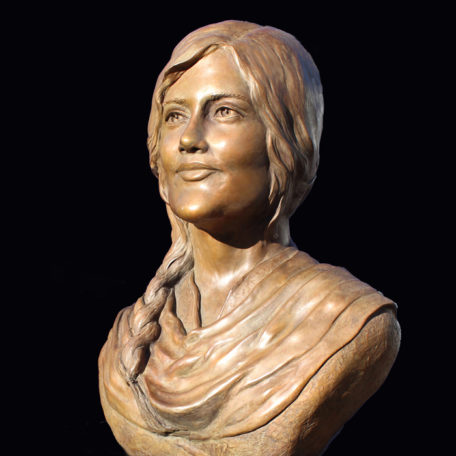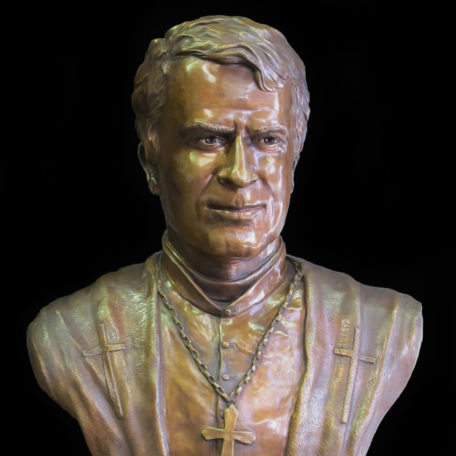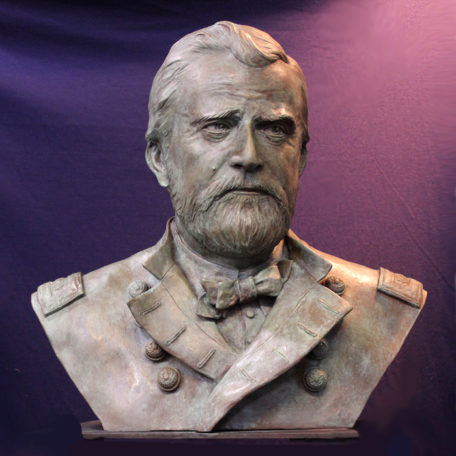Last week, the “Shakespeare” By Another Name Blog featured an interview with Ben August, the Houston entrepreneur who a week ago unveiled one of the most ambitious art projects in the history of the Shakespeare authorship controversy — a life-sized bronze bust of Edward de Vere, Earl of Oxford.
SBAN BLOG: When did Ben August first approach you with his possible commission for the Edward de Vere bust, and what was your first response?
PAULA SLATER: Ben came to me in July [2010]. He sent me an email saying he was interested in commissioning a portrait. We talked about how I do portrait bronzes. Then he emailed that picture [i.e. the Wellbeck portrait of de Vere], and I about flipped over the moon!
SBAN: Why?
SLATER: I sculpt congressmen and senators and leaders of industry. And this was so different. I love doing anything that has period clothing. Anytime there’s period clothing, it’s a challenge and a stretch.
Then when he emailed me more about the Oxfordian theory and who this actually was, I was totally captivated. I started reading more.
SBAN: How would you describe your own style — and how would you be applying that for this commission?
SLATER: I like to sculpt in high detail and with museum-quality finishing — in the style of [Gian Lorenzo] Bernini and Jean-Antoine Houdon.
The Wellbeck is a very flat painting. I really felt that I was going to need to bring it to life. I wanted that knowing look — yet also knowing there’s something hidden behind those eyes. That’s what I wanted to capture.
First I became enthralled with sculpting this portrait, and then I became enthralled with this story. And then I purchased those [“Shakespeare” By Another Name] CDs. You just can’t listen to those CDs and believe that anyone else was the author of the works.
I think in hearing about Edward de Vere, I felt there was an intensity and a lust for knowledge, certainly. And a bravado. At that age too, there is an invincibility. I think he displayed all of that. Some of that came across in the Wellbeck, and some of that was my feeling.
He was an aristocrat, and he had that flair with the clothing. He was an extravagant personality. But there’s this mystery. He was really a deep thinker. I felt I needed to have this mystery behind the eyes and have this depth of thought.
SBAN: Could you describe the process of making the de Vere bust? SLATER: To make a bronze bust, you start with a clay original. It’s life-sized.
Because there was so much detail, this was a lot to sculpt. There was the frilly lace collar and the buttons. And once Ben and I were both happy with that, a mold was made.
I took it to a mold-maker, who coats [the clay bust] with many layers of polyurethane. And a plaster mold is put on top of that. That’s called the “mother mold.” So you’ve got a nice hard mold. Then wax is poured inside the mold. And the mold is rotated around so the wax goes around to the inside of the mold. [The wax] is about 1/4 of an inch thick. hen you take off the mother mold, the hard plaster. And you peel off the urethane. So now you’ve got a wax that looks like the bust. And it’s hollow.
I then work my own waxes in case any details have been lost or air bubbles have come in. Usually everything is there. But maybe it requires a little refinement.
Then “sprues” are added. That’s a long square piece of wax that’s attached. Then it gets dipped into a “slurry” — coating with this sandy liquid batter. That’s allowed to dry. And then it gets coated again. They do this 10 or so different times. What you’re left with is a hard shell. This becomes the new mold.
So you melt the wax out of this hard shell. And where you put the sprues are the pour holes. The hot bronze coats all the insides of the hard shell. This is called a “lost-wax bronze.” It’s a 4000-year-old system.
SBAN: How many drafts of the clay original did you go through?
SLATER: I showed Ben maybe four or five drafts. I’m really tenacious about my sculpting. Even when people say that it looks fine now, I know it needs something more. I need to keep going until I say, ‘Ahh. That’s it!’
With the de Vere bust, the question was how do I think he might want to be remembered? The answer comes through my hands kinesthetically when I’m sculpting. It’s beyond words.
SBAN: The bronze bust has an extra layer of patinas, right?
SLATER: They polish it to being like a bright brass. I work with a patina artist who heats the metal with a propane blow torch and applies different chemicals to get different colors.
SBAN: What about the marble resin and Hydro-Stone versions?
SLATER: That’s a different kind of mold. I worked on a wax that I made sure was beautifully finished. It was poured extra thick too. I took it to a resin and marble casting company, and they made their own mold of it. They cast it.
SBAN: But for you, bronze is the ultimate medium, right?
SLATER: There’s something very substantial about bronze. It lasts for centuries. To me, it really cements his name with Shakespeare.
It’s similar in that same way to when Neda was shot in the heart in Iran. I just felt so compelled to sculpt her. I sculpted a portrait bust of her — she was wearing the hijab, the veil. And then I sculpted a second portrait of her.
For the Iranian people it was not only that someone in the U.S. cared, it also helped to cement her life and her [importance]. It became historic. Evidently 50 million people in Iran know this bust!
I thought I was going to sculpt her and donate the bust to an Iranian-American organization. But one organization leader told me to hold on to it until Iran is free because this bust should go in the art museum in Tehran.
The Neda sculpture just became so much bigger than I ever anticipated. It meant so much to have this image of her in 3 dimensions that the Iranian government couldn’t destory. It helped keep her alive.
SBAN: The author of The Sonnets of course says that even bronze doesn’t last forever. But there is still something a little more permanent about the recognition that this bust conveys.
SLATER: Because bronze lasts for centuries, it becomes part of the fabric of humanity. When we do that with an iconic image, it becomes historic.
I feel very blessed to do what I love for a living. This will, in the end, outlive us all.
